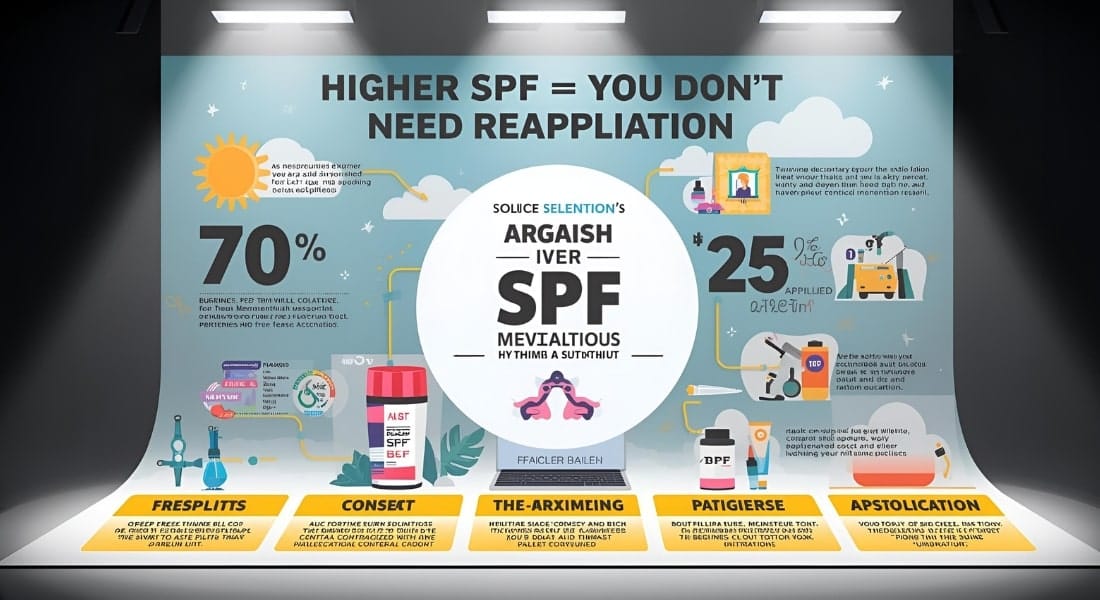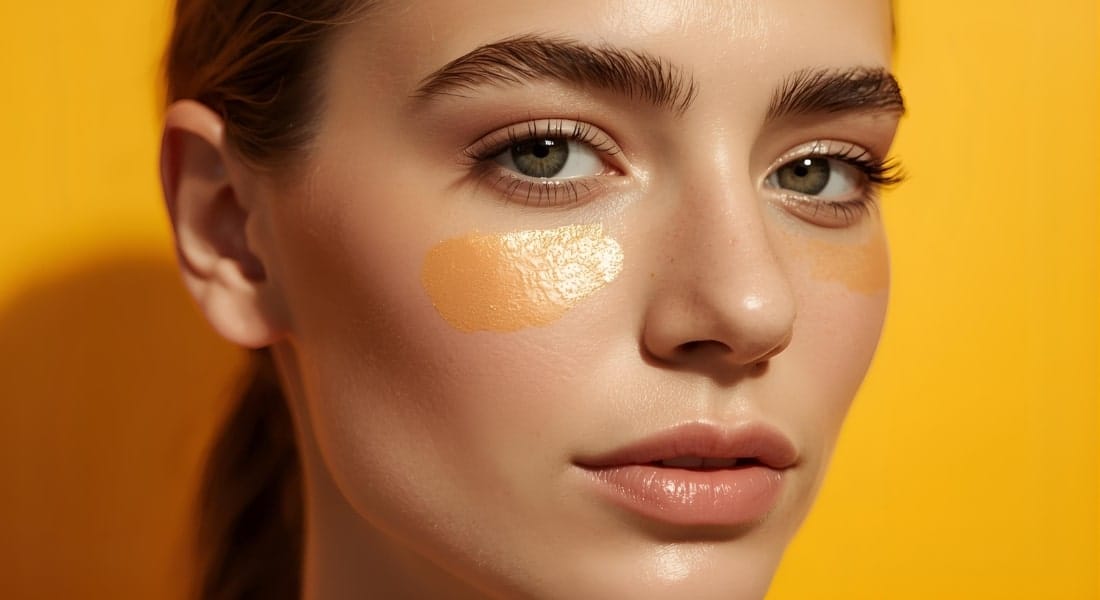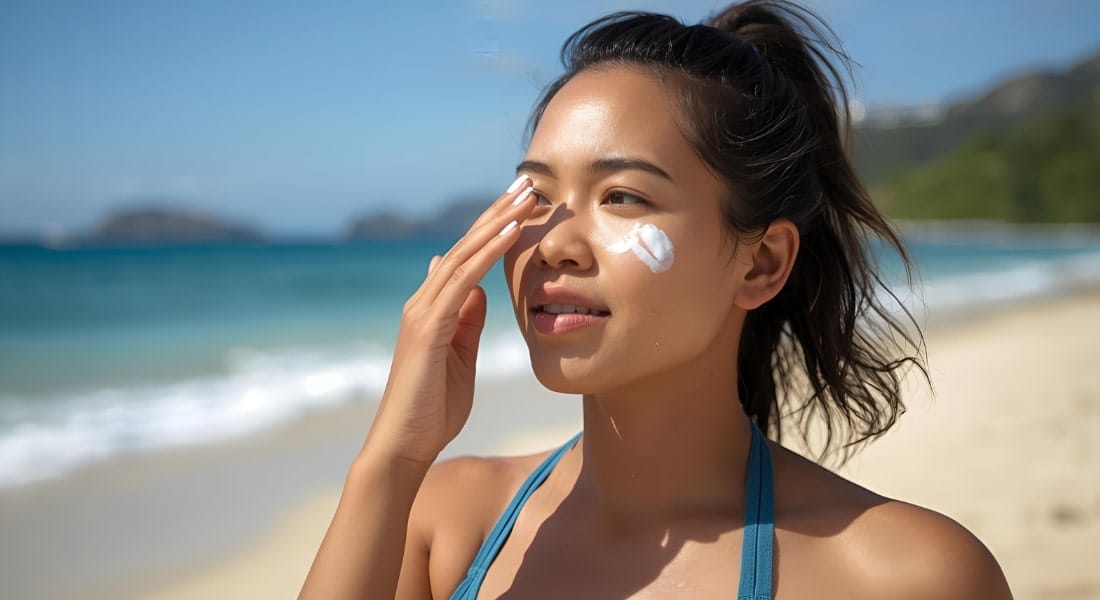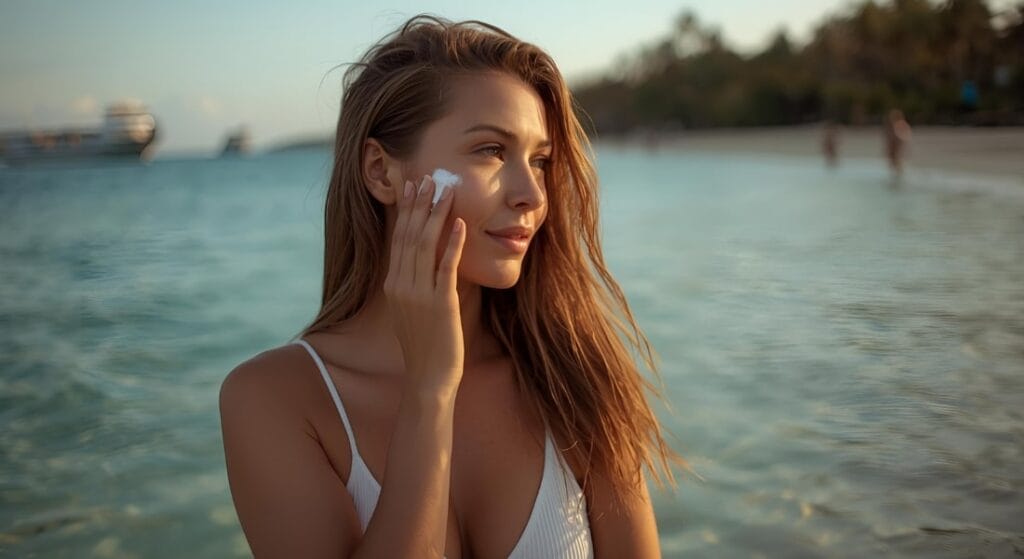Sun protection is one of the most misunderstood aspects of skincare. Despite being a core recommendation from dermatologists worldwide, the use of sunscreen is often surrounded by a web of myths and misinformation. These common misconceptions can lead to incorrect usage, leaving our skin vulnerable to damaging ultraviolet (UV) radiation. From whether sunscreen prevents tanning to the belief that you only need SPF on sunny days, these sunscreen myths compromise our long-term skin health.
This article will serve as your ultimate guide to understanding the truth about sunscreen. We’ll tackle the most pervasive myths head-on, providing dermatologist-backed facts to clarify how sunscreen truly works. We will address the central question of whether sunscreen prevents tanning and explore other critical topics like the importance of broad-spectrum sunscreen, debunking myths about indoor sun exposure, and the essential steps for a proper sunscreen routine. By the end, you’ll be equipped with the knowledge to protect your skin effectively, ensuring it remains healthy and youthful for years to come.
Does Sunscreen Prevent Tanning?
The short answer is no, sunscreen does not completely prevent tanning. This is one of the most common tanning and sunscreen misconceptions. To understand why, we first need to understand what a tan is. A tan is a defense mechanism your skin uses to protect itself from further damage. When your skin is exposed to UV radiation, it triggers the production of melanin—a pigment that darkens the skin. This darkening is your body’s attempt to create a shield against future UV exposure.
Sunscreen’s job is to either absorb or reflect UV rays, thereby reducing the amount of radiation that reaches your skin. A high-quality, broad-spectrum sunscreen with a high SPF rating, such as Lytec SHELL Sunscreen, is highly effective at blocking the majority of UVB rays (the primary cause of sunburn) and a significant portion of UVA rays (the main contributor to tanning and premature aging). However, no sunscreen can block 100% of UV radiation. A very small percentage of rays will always get through, which can still stimulate melanin production over time, resulting in a gradual tan.
Therefore, while sunscreen drastically reduces the intensity of UV exposure and helps prevent the kind of deep, damaging tan that leads to sunburn and skin cancer, it won’t keep you from getting a slight tan over prolonged periods in the sun. The goal of using sunscreen is not to remain porcelain white, but to protect your skin from the harmful effects of UV radiation, including DNA damage, premature aging, and the risk of skin cancer.
Common SPF Myths Debunked
Myth 1: Higher SPF = You Don’t Need Reapplication

Fact: This is a dangerous misconception. SPF (Sun Protection Factor) measures how much UVB radiation a sunscreen can block. SPF 15 blocks about 93%, SPF 30 blocks 97%, and SPF 50 blocks around 98%. While a higher number offers slightly more protection, no SPF rating provides 100% protection, and all sunscreens lose effectiveness over time due to sweat, water, and friction. Dermatologists universally recommend reapplying sunscreen every two hours, regardless of the SPF number, or more frequently if you’re swimming or sweating heavily. Rely on a product like Lytec SHELL Sunscreen, which is formulated for long-lasting protection, but remember that reapplication is key to its effectiveness.
Myth 2: You Don’t Need Sunscreen Indoors or on Cloudy Days
Fact: This myth leads to significant, unnoticed sun damage. While UVB rays are largely blocked by clouds and glass, UVA rays are not. UVA rays, which penetrate deeper into the skin and are responsible for premature aging (wrinkles, fine lines, age spots), can easily pass through windows. This makes indoor sunscreen use essential, especially if you sit near a window at home or in the office. Even on cloudy days, up to 80% of the sun’s UV rays can penetrate clouds. This is why consistent, daily sun protection is crucial.
Myth 3: Sunscreen Causes Vitamin D Deficiency
Fact: This is a widely circulated but largely unfounded myth. While sunscreen does block the UVB rays that trigger Vitamin D synthesis in the skin, multiple studies have shown that regular, daily use of sunscreen does not lead to a Vitamin D deficiency. This is because most people don’t apply enough sunscreen, don’t reapply often enough, or miss spots, allowing some UV exposure to occur. Furthermore, our bodies only need a few minutes of sun exposure a day to produce sufficient Vitamin D, and a healthy diet, fortified foods, and supplements are reliable alternatives.
Myth 4: Darker Skin Tones Don’t Need Sunscreen
Fact: This is a dangerous and entirely false belief. While individuals with darker skin have more melanin, which provides a natural SPF of about 13, they are still susceptible to sun damage, including sunburn, hyperpigmentation, and skin cancer. Skin cancer in people of color is often diagnosed at a more advanced stage, making it more dangerous. Sunscreen is essential for all skin tones to protect against UV damage and to prevent issues like uneven skin tone and hyperpigmentation. Lytec SHELL Sunscreen is a great choice for all skin types as it is formulated to be non-greasy and blend seamlessly into the skin.
Myth 5: Makeup with SPF is Enough

Fact: While it’s great that many makeup products now include SPF, relying on them alone for sun protection is a mistake. The amount of makeup a person applies is far less than the recommended amount of sunscreen needed for full protection (about a quarter-teaspoon for the face). The SPF in makeup is also often not broad-spectrum, leaving your skin vulnerable to UVA rays. You should always apply a dedicated sunscreen, such as a broad-spectrum SPF 30 or higher, under your makeup for reliable and comprehensive protection.
Why Broad-Spectrum Matters
When choosing a sunscreen, you’ll see the term “broad-spectrum” and an SPF number. These are two distinct but equally important features. SPF (Sun Protection Factor) measures protection against UVB rays, which are the primary cause of sunburn and contribute significantly to skin cancer. However, SPF does not measure protection against UVA rays.
UVA rays penetrate deeper into the skin’s layers, causing long-term damage like premature aging (wrinkles, fine lines, and dark spots) and are also linked to skin cancer. A broad-spectrum sunscreen offers protection against both UVA and UVB rays, providing a more complete defense for your skin. The importance of UVA protection cannot be overstated, as these rays are present all year round, even on cloudy days, and can pass through glass.
This is why Lytec SHELL Sunscreen is an ideal choice. Its advanced formulation provides broad-spectrum SPF 30 protection, shielding your skin from both types of damaging UV radiation. It is designed to be a reliable part of your daily sun protection routine, ensuring your skin is defended against both the immediate effects of sunburn and the long-term signs of photoaging.
Best Practices for Sunscreen Use
Applying sunscreen correctly is just as important as choosing the right product. Here are the best practices for sunscreen use to ensure maximum effectiveness:
- Use the Right Amount: Most people apply far less sunscreen than needed. For your face, neck, and ears, use about a quarter-teaspoon or the “two-finger method” (squeeze two full lines of sunscreen onto your index and middle fingers). For your body, use about an ounce—enough to fill a shot glass.
- Apply 15-30 Minutes Before Sun Exposure: Give the sunscreen time to absorb and form a protective barrier before you step outside.
- Don’t Forget Key Areas: Pay close attention to often-missed spots like your ears, neck, scalp, hands, and feet.
- Reapply Regularly: Reapply at least every two hours, and more frequently after swimming, sweating, or towel-drying. Even water-resistant sunscreens lose their effectiveness. The convenience of a product like Lytec SHELL Sunscreen makes frequent reapplication easy.
- Layer with Other Skincare: Apply your sunscreen as the last step in your skincare routine, right before makeup. This ensures it creates an uninterrupted protective layer on your skin.
By following these simple steps, you can ensure your skin is properly protected from sun damage, regardless of the weather or your daily activities.
Conclusion

In the end, the answer to “does sunscreen prevent tanning?” is nuanced. While it won’t completely stop your skin from producing melanin, its primary and most vital function is to protect against the damaging effects of UV radiation, thereby preventing sunburn, premature aging, and reducing the risk of skin cancer.
By debunking common SPF myths, we empower ourselves to make better choices for our skin. Remember, sun protection isn’t just about avoiding a tan—it’s a crucial part of your daily health routine. From sunny days to cloudy ones, from the beach to the office, consistent and correct use of a broad-spectrum sunscreen is the single most effective way to maintain healthy, resilient skin.
Make sun protection a non-negotiable part of your daily regimen. Choose a reliable and effective product like Lytec SHELL Sunscreen to ensure your skin is protected every single day.

